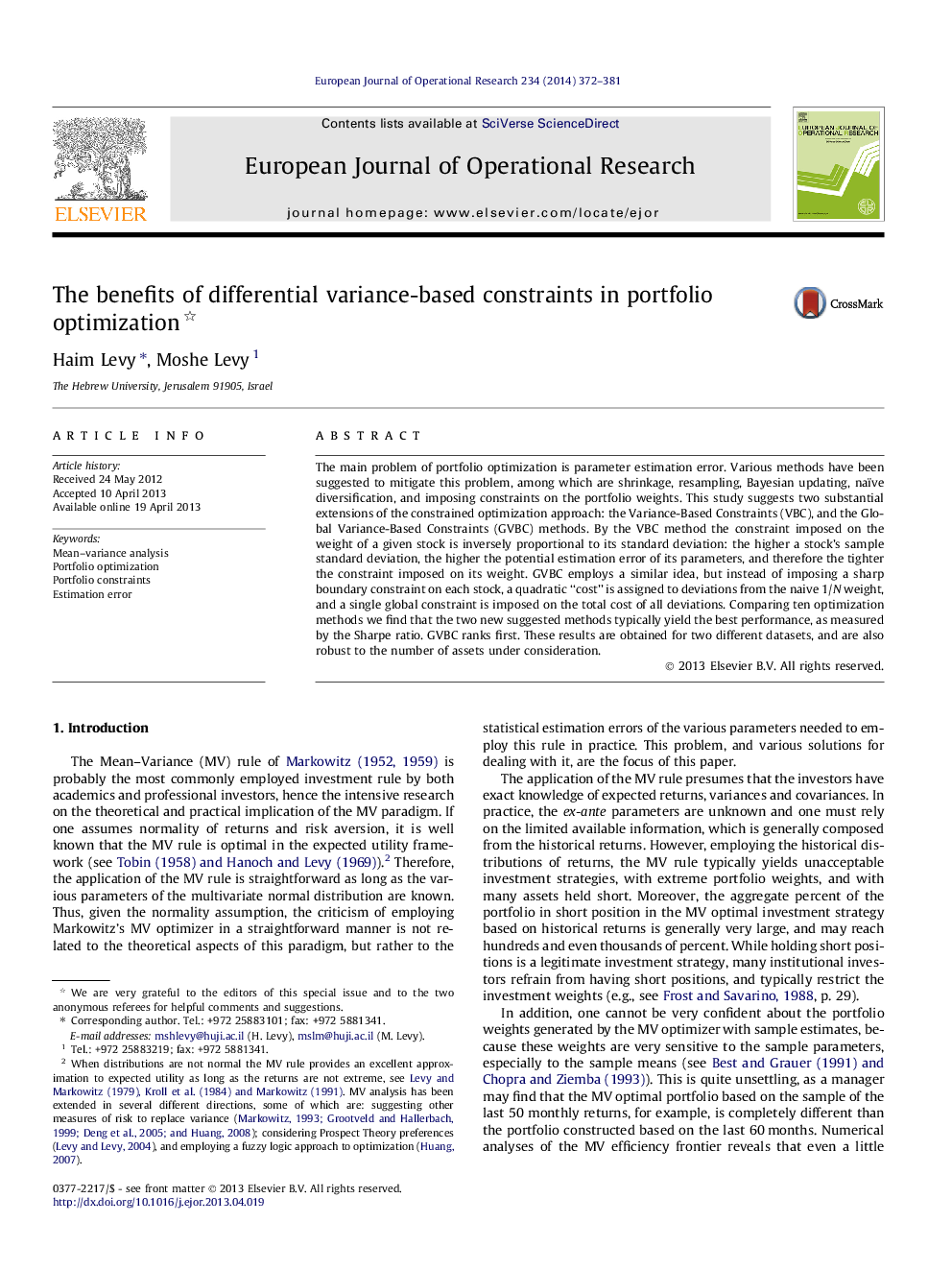| Article ID | Journal | Published Year | Pages | File Type |
|---|---|---|---|---|
| 479813 | European Journal of Operational Research | 2014 | 10 Pages |
•We suggest extensions to portfolio optimization with constraints.•The constraints on a stock’s portfolio weight are determined by its sample variance.•The suggested methods yield improved performance relative to existing methods.
The main problem of portfolio optimization is parameter estimation error. Various methods have been suggested to mitigate this problem, among which are shrinkage, resampling, Bayesian updating, naïve diversification, and imposing constraints on the portfolio weights. This study suggests two substantial extensions of the constrained optimization approach: the Variance-Based Constraints (VBC), and the Global Variance-Based Constraints (GVBC) methods. By the VBC method the constraint imposed on the weight of a given stock is inversely proportional to its standard deviation: the higher a stock’s sample standard deviation, the higher the potential estimation error of its parameters, and therefore the tighter the constraint imposed on its weight. GVBC employs a similar idea, but instead of imposing a sharp boundary constraint on each stock, a quadratic “cost” is assigned to deviations from the naive 1/N weight, and a single global constraint is imposed on the total cost of all deviations. Comparing ten optimization methods we find that the two new suggested methods typically yield the best performance, as measured by the Sharpe ratio. GVBC ranks first. These results are obtained for two different datasets, and are also robust to the number of assets under consideration.
